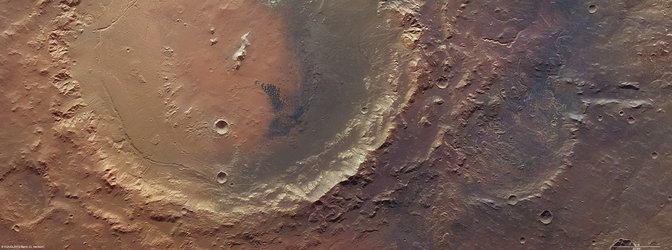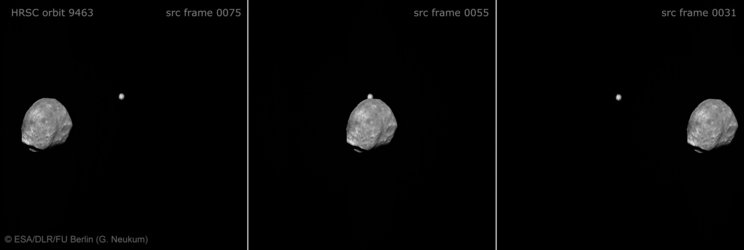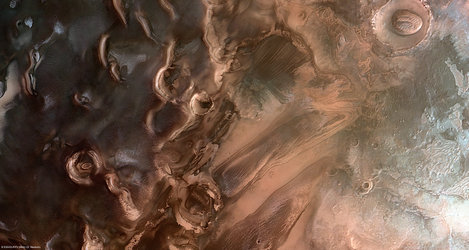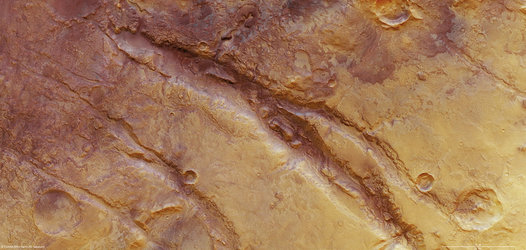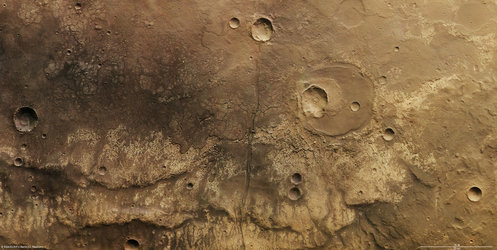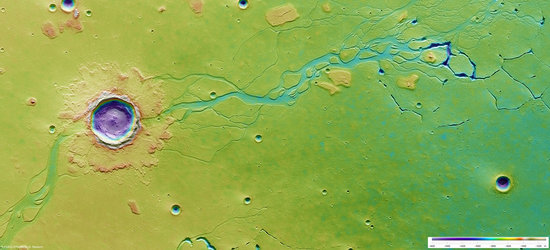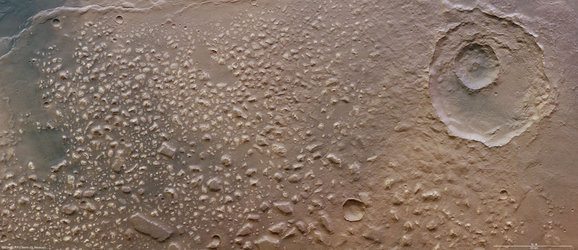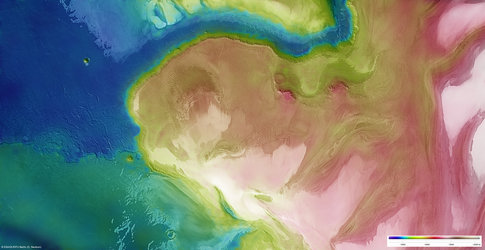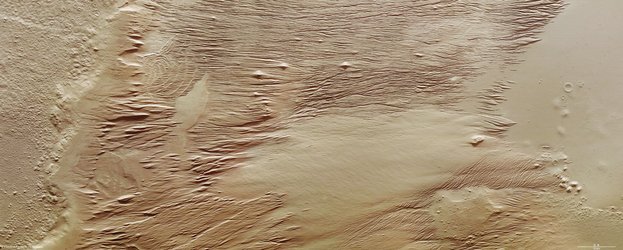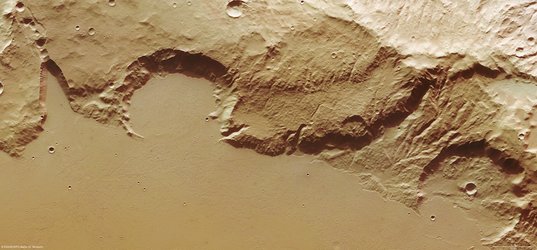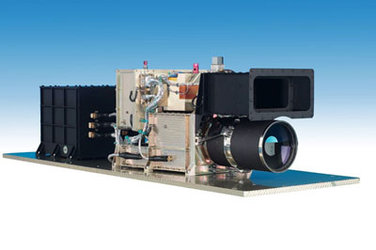Mars’ northern polar regions in transition
A newly released image from ESA’s Mars Express shows the north pole of Mars during the red planet’s summer solstice. All the carbon dioxide ice has gone, leaving just a bright cap of water ice.
This image was captured by the orbiter’s High-Resolution Stereo Camera on 17 May 2010 and shows part of the northern polar region of Mars during the summer solstice. The solstice is the longest day and the beginning of the summer for the planet’s northern hemisphere.
The ice shield is covered by frozen water and carbon dioxide ice in winter and spring but by this point in the martian year all of the carbon dioxide ice has warmed and evaporated into the planet’s atmosphere.

Only water ice is left behind, which shows up as bright white areas in this picture. From these layers, large bursts of water vapour are occasionally released into the atmosphere.
The polar ice follows the seasons. In winter, part of the atmosphere recondenses as frost and snow on the northern cap. These seasonal deposits can extend as far south as 45°N latitude and be up to a metre thick.
Another phenomenon occurs on the curved scarps of the northern polar cap, such as the Rupes Tenuis slope (on the left of this image). During spring, the seasonal carbon dioxide layer is covered by water frost. At certain times, winds remove the the millimetre-thick top layer of frozen water, revealing the carbon dioxide ice below.

These processes bear witness to a dynamic water cycle on Mars and may lead to the varying accumulation of water ice over the polar cap.
Other noticeable features in this image include the Chasma Boreale canyon, coloured deposits and a large dune field.
Chasma Boreale is about 2 km deep, 580 km long and about 100 km wide. Its walls allow a perfect view into the strata within the deposits. There are impact craters on the canyon floor, some heavily covered by sand and some partly exhumed.
Dark and light-toned deposits can be seen as a fine and regular covering. The darker sediments have been dropped by the winds during spring dust storms. The patterns are created when the deposits change in quantity according to the seasons.

The polar cap is surrounded by a large dune field, parts of which extend 600 km to the south.
Mars Express will soon be using its radar to probe the northern polar cap in three dimensions. Since the radar antenna was deployed in mid-2005, the team have been waiting for the right conditions to observe the region.
The radar works best at night when the electrical interference from the planet’s atmosphere is at a minimum. An excellent opportunity to observe the cap’s shape, depth and composition occurs in August and September 2011.
Stay tuned for new results!
Mars Express vil snart begynne å bruke radaren ombord for å undersøke polkappen i tre dimensjoner. Siden radarantennen ble foldet ut i 2005 har forskerne som jobber med Mars Express ventet på at forholdene skal bli riktige for å undersøke polkappen med radar.
Radaren fungerer best på natten når de elektriske forstyrrelsene i atmosfæren er minst. I august og september 2011 vil det bli gode sjanser til å undersøke polkappens form, dybde og sammensetning.
Følg med for flere nyheter fra Mars!
Se menyen til høyre for å vite mer om Mars og Mars Express.















 Germany
Germany
 Austria
Austria
 Belgium
Belgium
 Denmark
Denmark
 Spain
Spain
 Estonia
Estonia
 Finland
Finland
 France
France
 Greece
Greece
 Hungary
Hungary
 Ireland
Ireland
 Italy
Italy
 Luxembourg
Luxembourg
 Norway
Norway
 The Netherlands
The Netherlands
 Poland
Poland
 Portugal
Portugal
 Czechia
Czechia
 Romania
Romania
 United Kingdom
United Kingdom
 Slovenia
Slovenia
 Sweden
Sweden
 Switzerland
Switzerland




























